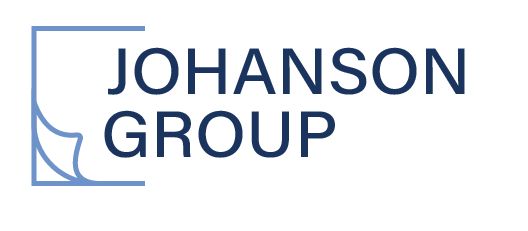What is a ISO 27001 Surveillance Audit?
Organizations are continually challenged to protect their sensitive data and ensure compliance with international standards. Among these standards, ISO 27001 stands out as a beacon of best practices for information security management systems (ISMS). But how do organizations ensure that their commitment to ISO 27001 standards remains unwavering over time? The answer lies in a ISO 27001 surveillance audit.
ISO 27001 Surveillance Audits— The Basics
These ISO 27001 surveillance audits are not isolated events; instead, they are part of a continuous evaluation process. Their primary purpose is to confirm that an organization is still aligning with ISO standards, ensuring that information security remains a top priority.
ISO standards, whether it's ISO 9001 for quality management or ISO 27001 for information security, require organizations to undergo certification audits initially.
After receiving certification, that’s when surveillance audits come into play, keeping organizations accountable to their commitment to these standards.
When and How Often Should ISO 27001 Surveillance Audits Be Done?
Surveillance audits operate on a specific schedule. Typically, they are conducted the year following an organization's initial ISO certification and continue annually thereafter. Some organizations, based on their unique business requirements, may opt for semi-annual surveillance audits.
These audits are essential to maintain the validity of the certification, and they ensure that the organization's management system remains functional and aligned with ISO requirements.
Benefits of Surveillance Audits for Organizations
In this section, we'll explore the manifold advantages that surveillance audits bring to organizations committed to ISO 27001 compliance. These audits are not merely a regulatory necessity; they are strategic tools that help organizations enhance their information security practices, mitigate risks, and foster a culture of continuous improvement.
Ensuring Sustained Compliance
Surveillance audits hold immense importance in the realm of ISO compliance. Their role cannot be understated, as they serve as vigilant guardians of an organization's commitment to adhering to ISO standards. These audits, conducted at regular intervals, play a pivotal role in assessing and confirming an organization's ongoing compliance with these critical standards. In essence, they act as a crucial checkpoint in the journey towards maintaining the highest standards of information security and ensuring that an organization's practices align with ISO 27001 requirements.
Identifying Potential Risks
Surveillance audits are thorough examinations that cover multiple aspects of an organization, such as key processes, incident prevention and response, internal auditing, and non-compliance areas. This in-depth review aids organizations in spotting potential risks and areas requiring enhancement.
Driving Continuous Improvement
ISO 27001 surveillance audits go beyond mere compliance checks. They encourage a culture of continuous improvement. By addressing non-conformities identified in previous audits, organizations can refine their information security management systems and enhance their overall security posture.
Key Components of an ISO 27001 Surveillance Audit
Maintaining ISO 27001 compliance is an ongoing commitment in the ever-evolving landscape of information security. To ensure that your information security management system (ISMS) remains robust and aligned with ISO standards, surveillance audits play a pivotal role.
In this section, we will break down the key components of an ISO 27001 surveillance audit, shedding light on what organizations can anticipate during this critical evaluation.
Scoping and Planning
The journey of a surveillance audit begins with meticulous scoping and planning. During this phase, auditors carefully outline the specific areas they will review throughout the audit process. These areas encompass various aspects of information security, including:
Risk Assessment: Auditors assess how effectively your organization identifies and manages information security risks.
Control Implementation
The implementation of information security controls is scrutinized to ensure they align with ISO 27001 requirements.
Incident Management
Auditors evaluate the incident management procedures in place to respond effectively to security incidents and breaches.
Continuous Improvement Processes
The effectiveness of processes aimed at continually improving your ISMS is a focal point, as ISO 27001 encourages a culture of continuous enhancement.
Areas Under the Microscope
Once the scoping and planning phase is complete, the audit proceeds to the heart of the matter. Auditors delve deep into your organization's operations, assessing various facets of your information security management system.
Areas under scrutiny include:
Management Reviews: Auditors assess the effectiveness of your organization's management reviews, ensuring they align with ISO standards and contribute to the enhancement of the ISMS.
Preventive and Corrective Actions: The audit evaluates the processes in place for preventing security incidents and responding to them promptly and effectively when they occur.
Internal Auditing Processes: The effectiveness of your internal auditing processes is examined to verify that they align with ISO 27001 requirements.
Implementation of Recommendations: Any recommendations stemming from previous internal audits are reviewed to ensure they have been implemented effectively and have contributed to strengthening the ISMS.
Conclusion
In conclusion, surveillance audits are the unsung heroes of ISO 27001 compliance. They ensure that organizations don't merely achieve ISO certification but also maintain it through ongoing commitment and improvement. These audits act as a safety net, safeguarding sensitive data and bolstering an organization's reputation for information security.
We encourage organizations to prioritize surveillance audits as a vital tool for continuous monitoring and enhancement of their information security practices. By doing so, they can protect their critical assets, mitigate risks, and thrive in an increasingly interconnected digital world.
Remember, in the realm of ISO 27001 compliance, vigilance is key, and surveillance audits are your trusted allies.
Partner with Johanson Group for ISO 27001 Success
Ready to navigate the ISO 27001 process, including surveillance audits, with confidence?
Let Johanson Group be your trusted partner on this journey. We bring expertise and experience to ensure your organization not only achieves ISO certification but maintains it with excellence.
Contact us today to safeguard your data, enhance your security practices, and thrive in the digital world.







Among the most renowned certifications are ISO 27017 and ISO 27018, which focus on cloud security and personally identifiable information (PII) respectively. But what sets them apart, and which one does your organization need?